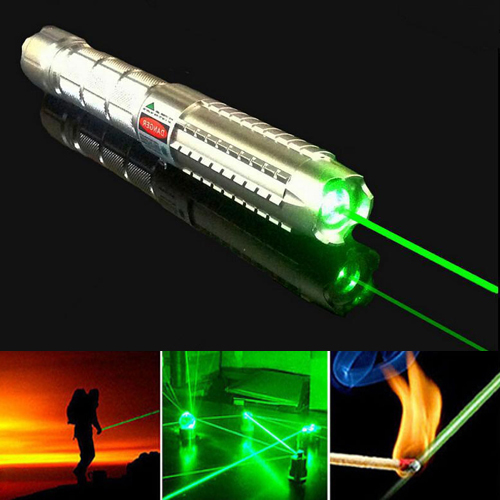Why is the laser beam so thin? There is no absolute reason to say that they must be thin. The “green laser pointer” is only light amplified by stimulated radiation, so if you prepare some optical gain medium in its excited state and put in some “seed” light of the correct frequency, it will be amplified, otherwise no matter what beam shape it enters. As long as this happens, you technically have a laser, even though it is also an optical amplifier.
The driving factor for a relatively thin and collimated beam is that it is usually advantageous to put the gain medium in the optical cavity. By reflecting the light multiple times between opposing mirrors, you can give the light more opportunities to interact with the medium. For many media that cannot release energy quickly enough for a single pass within a reasonable length, this allows more amplification.
It can also better control the output wavelength/frequency-the output is limited to the range that the gain medium will amplify (usually narrow, but not so narrow, such as the 9.6-10.4 µm of a carbon dioxide laser) and resonates in the cavity . It is usually the cavity that provides the laser with an extremely monochromatic, coherent, and collimated beam, and they are known for this.

Then, although in theory the optical cavity can be of various exotic shapes, the version with two flat or almost flat mirrors is easy to build and use, and naturally provides a very directional output beam (if you reflect one of them) The mirror is made a little less instead of reflecting perfectly).
The width of the beam is a trade-off: if you make it too narrow, the beam will quickly diverge in an uncontrolled manner due to diffraction. On the other hand, you will soon fall into diminishing returns and make the beam wider than necessary , Need larger and more expensive mirrors, more volume gain medium, etc. If you need a wide beam for some precision applications, such as holography, you usually best start with a medium width beam and then expand it with a lens.
They should be very thin. Coherence causes the laser pointer beam to be focused far away. You can’t burn through a missile with a flashlight or send a signal for miles, but you can use a laser in these applications because it’s thin (coherence). (Obviously, not all lasers can blow things up-it depends on the chemical elements used.